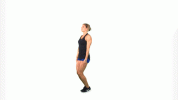- Sep 3, 2005
- 9,162
- 8,140
EDIT: This is a conversation split out of another thread. You can view that thread at the following link to see how the conversation started...

 www.chalkbucket.com
www.chalkbucket.com
The concept of this conversation is basically... "Can you use long term athlete development to get an athlete into upper level gymnastics?"
EDIT2: This is about WAG & MAG... athletes in general.
L4 is much harder than L3... L4 is really the first useful level in the JO system. L3 is just way to aggressive to be useful.
This is why we are no longer competing L2 or L3. All of our athletes will start with the Xcel program... as they move toward Gold... the ones that are committed and mentally / physically able will have the option to compete L4. This system will keep us from getting stuck in the win... win... win mentality of compulsory gymnastics too early.
We don't need to win at the low levels... we need to do very vague things like...
WAG - Level 4 much harder than 3?
L4 is much harder than L3... L4 is really the first useful level in the JO system. L3 is just way to aggressive to be useful. This is why we are no longer competing L2 or L3. All of our athletes will start with the Xcel program... as they move toward Gold... the ones that are committed and...
The concept of this conversation is basically... "Can you use long term athlete development to get an athlete into upper level gymnastics?"
EDIT2: This is about WAG & MAG... athletes in general.
------------
L4 is much harder than L3... L4 is really the first useful level in the JO system. L3 is just way to aggressive to be useful.
This is why we are no longer competing L2 or L3. All of our athletes will start with the Xcel program... as they move toward Gold... the ones that are committed and mentally / physically able will have the option to compete L4. This system will keep us from getting stuck in the win... win... win mentality of compulsory gymnastics too early.
We don't need to win at the low levels... we need to do very vague things like...
- Learn to learn
- Learn to train
- Train to train
- Train to win
Last edited:
